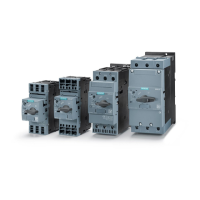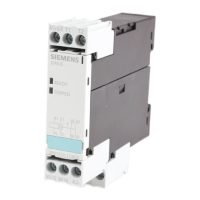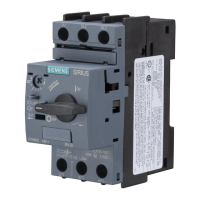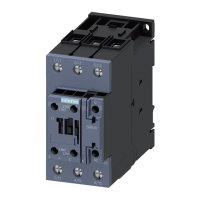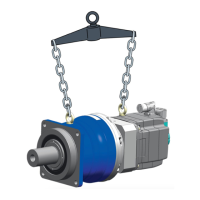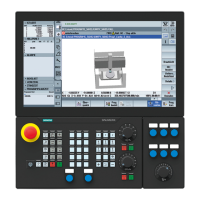Glossary
SIRIUS Innovations
762 System Manual, 01/2011, A8E56203870002-03
Auxiliary switch block for compact starter
Optional auxiliary switch block in the following versions: 2 NO contacts, 2 NC contacts or
1 NO contact plus 1 NC contact.
AWG (American Wire Gauge)
A standard measure for conductors used in the USA, which is assigned to a specific cross-
sectional area of a conductor or wire. Each AWG number represents a jump of 26% in the
cross-sectional area. The thicker the wire, the smaller the AWG number.
Basic module
Function modules consist of at least one basic module, which can be expanded by adding
coupling modules as required. The basic module contains the control logic and, for star-delta
(wye-delta) modules, the time setting for starting in star operation and a 10-pin connector
into which the plug connectors on the coupling modules are inserted.
Bypass operation
Once the motor has been started up correctly, the thyristors in the SIRIUS soft starters are
subject to fully advanced control, meaning that the whole line voltage is applied to the motor
terminals. As the motor voltage does not have to be controlled during operation, the
thyristors are bridged by integral bypass contacts that are rated for AC1 current. This
minimizes the waste heat generated during continuous operation (which is caused by the
thyristors' power loss), and prevents the switching device's environment from heating up.
CLASS (time)
See "Tripping class".
Closing power
The power input of the magnet coils of a contactor, which is required to set the magnet
system in motion. In AC operation, this power input is usually higher than the holding power.
When running SIRIUS contactors in DC operation, the closing power is equal to the holding
power.
Connection system
SIRIUS has the right connection system for every environment: screw terminals, spring-
loaded terminals, or ring cable lug connection.
Contactor
Switching device with just one neutral position, usually without a mechanical lock, which is
not activated manually and which, under normal circuit conditions, including an operating
overload, can switch on, conduct and switch off currents. Contactors are primarily used
where high switching frequencies are involved. A distinction is made between: contactors for
switching motors (motor switches) and contactor relays for control purposes.

